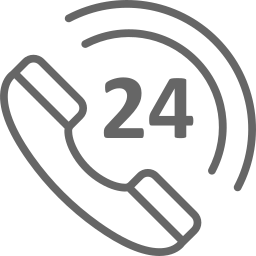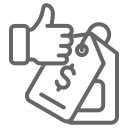This essay will highlight the organizational theory and assessment of the company Uber. The use of theories will be applied to Uber to critically analyze the organization's current issues and the implications of the same. The essay will examine the limitations and explore the prospective among stockholders. Understanding an organization is a difficult task and developing a behavior system is difficult in the organization. The use of theoretical aspects in understanding organizational action will develop a unique environment for a greater understanding of the organizational dynamics. Organizational values provide management structure, leadership initiatives to understand the success or failure of the organization in the long run.
Uber has been subjected to wide criticism on its stance on corporate social responsibility, labor dispute, and pattern of failure that has been putting the passenger at risk. These justifications and experiences will briefly help in reviving Uber. The controversies highest the company culture and identity crisis.
Uber technologies known as Uber are known for ride-hailing, package delivery, and food delivery services majorly (Uber, 2020). The company has a total staff strength of 28000 employees worldwide and is operating in over 65 countries (Uber, 2020). Uber’s organization structure has been traditionally hierarchal with driven by company co-founder and former CEO Travis Kalanick, with the change in central piston the system has turned to a flexible style of adoption. The organization is currently led by Dara Khosrowshshi with investors such as Soft bank vision fund and Saudi Arabia public fund (Uber, 2020). Uber has seen phenomenal growth in the ride-hailing market. the company used marketing effectively own transportation problem to provide the solution in share cab service as well. The company has expanded from 12 cities to 600 cities in its short span. The company managed under the advisory board and supervision of Dara Khosrowshashi follows the vision for always hustling (Uber 2019). The integration of mobile application for taxi hire has led uber to expand the model in the delivery business to expedites technological expertise in the market. The business on the whole demand for meal delivery Uber Eats too has become popular.
In recent years, Uber has been stripped of a license on unfair employment practice and not recognizing drivers as employees. The COVD 19 has impacted the organization and had taken its workforce cut with business operations to a standstill. The company has batted privacy issues and consumer safety as compromised. The organization culture has been impacted by harassment, unfair employment practice as a common reason has evolved. The financial expansion and economic uncertainty have led to a contraction in demand. The drivers have been accused of distributing indecent images. The company has received TFL London judgment on tax avoidance and the crisis of low paying impact Uber majorly on its reputation and lack of cultural orientation. The incidents of sexual harassment had led to the resignation of CEO Travis (The verge, 2019). The Equal Employment Opportunity has labeled the organization as a retaliation of individuals and emitted the culture of sexual harassment (The verge, 2019)
Institutional theory reflects the organizational structure that drives change and shapes the organization for driving change (Dacin, 2002). The uber structure shows weakness and an indication of this is deprival and disappearance of organization belief and practice. The theory will highlight the managerial structure and business strategy failure. This is an indication of the arrival of a new set of structures and beliefs. The weak organization structure is the reason for the abandonment of ethical standards and organization conduct. The concept of deinstitutionalization shows the breakdown of formal structure (Scott, 1987). The perspective Uber shows massive downsizing in cases that have harmed the organization. This institutional theory highlights the focal organization in developing an organizational structure. Uber has faced issues with structure and rigidity previously n top management with norms conflicting with word ideas on power structure and organization conduct.
Organizational culture is pivotal in recognizing the current flaws in Uber's functioning and navigation of the same. Organizational culture represents norms, structure, common belief, and values. Uber’s organizational culture and non-management of decisions show a failure by the top management. Culture as negative/passive impacts the business's wrongdoings, and the organization system followed (Alvessn, 2015). The theory recognizes the substantive culture crisis embedded in the Uber and recognizing shared mental assumptions for situations. Organization theory act as a guide for defining conduct during the situation. The rituals and behavior of an individual are not reflected in individual behavior. Culture is a combination of collective assumptions and values that shape the organization's environment. The organization culture will help in understanding values, system belief to understand the management failure in addressing at Uber
The concept of institutional theory is the process of instilling value in the organization. Its emphasis on building a system and structure for conformity to guide behavior and the process. The concept of deinstitutionalization the process to weaken and disappear to develop new norms. A normative pressure and coercive action show imporphic change. Isomorphism force is strong where the organization adapt to policies and standard (Scott, 1987). Institutionalization links the organization to larger societal values and leaders emphasize work structure. The aimed the institutional theory is to explain stability and the inter-organizational realm. The pursuit of innovation drives organizations in taking missteps that result in risky endeavors. Institutional theory look at rules that are established within the organization focused on the thinking and behavior of organizational members. The richer understanding can be developed through establishing a social structure for new ways to become institutionalized without coercion (Dacin, 2002).
Organizational culture has an impact on employee attitude and behavior. It a nexus of the environment was creating a nested overlapping culture impacts the organizational boundary (Schein, 2016). The organization culture theory shows the conduct that the employer should follow in the organization. The culture adopted in the organization is reflected in employee action. This places a greater need for developing consideration, values taught well to new members. A workplace with disgruntled work culture involved avoidance as attitude. Organizational culture helps in differentiating core organization values from others. Normative values appear in the organization build behavior for lack of intervention. Organizational culture is the basic underlying value of the organization. Culture is based on artifacts as external manifestation this reflected in rituals and dress code (Schein 2016).The characteristics of culture drive members based on aggressive/defensive culture that drives status and security. Organizational culture is characterized by power, role achievement. The organization culture is articulated through adaptive behavior and creating a shared belief system.
Values are the way individuals behave and the assumption that determines feeling and thinking. The different perspectives of culture show. Organizational culture develops people to cope with the new world. Culture is pervasive that influences the primary task and internal operations. The basic assumption our fundamental in shaping the organization. This involves determination on thinking and behavior that don’t conform to current reality.
The organizational theories are critical in highlighting the issues at Uber. The team culture is fragmented, with a change in structuring and few key exits company is facing cultural orientation. The alignment activities classified as short term performance improvement created tension among organization employees. The HR actions and retrospective activities have not shaped the organization struggling with employee anger and regulatory fear. This has crippled the organization on forming team cohesiveness and business operation mid rapid expansion of the firm.
Organizational culture is significant in highlighting Ubers’ failure and the causes of its crisis. The passive/ aggressive approach in corporate culture should not threaten security. The lack of top-level management in integrating employees, the temperant awards employees with the firing of employees post cash crunch shows a dysfunctional and dynamic workplace. Comparing Uber’s advancement in the market the revenue generation approach has resulted in a toxic workplace. The post-modernistic fragmentation acknowledges the complexity of people's interaction and inserts the nature of paradigm. The fast revenue and always hustle approach has resulted in abuse of power and company avoiding pressing issues. Uber’s stand on workplace equality and employee growth and welfare is not instilled within the culture. The change in organization CEO has a little impact on discrimination and harassment at the workplace a team cohesion and job security impacted openness with no transparency from top management. The existence of cultural groups shows the harmony or census towards a common goal in the organization. It is essential to keep safety and employee interest as organizational culture. An organization's culture can build high morals and values in goals and objectives. Uber failed in understanding and pivoting company instead became ignorant towards business practice. The non-action of co-founder Travis and Garett from board directors to removal and board observer role showed the organization flaw in managing the workplace centered by board decisions. The cultural and workplace challenges have created a long task list for new CEO Khosrowshahi with public disclosure on failure to prioritize compliance and siloed teams hat lacked knowledge sharing (Quartz, 2019). The forwards leaning approach highlights the cultural challenges with the pro treatment of drivers. The organizational theory shows a high degree of differentiation in behavior styles This theory highlights financial objectives and unaligned expansion is the company s objective leading to employee resistance and regulatory conduct on Uber.
The institutional theories are centered on organizational behavior aligned to conduct. Uber management ignored the ethical practice and sough tax evasion. The poor treatment of drivers and compliant on employee conduct and risking passenger safety show negligence in behavior and abounding norms in the institutional field. The institutional theory allows us to think that the organization practice diminished over time or was not followed since the beginning. The actions by the internal committee have been only taken once the same is taken by the government. The managerial issues lie with employee training and have the potential impact of external influence on organization integrating towards innovation and not participative on “adaptive culture” (Alvessn 2015). The institutional theory highlights the lack of management in providing leadership towards developing employee training. The business model that recognizes earning opportunities has made negligible changes in the treatment of drivers, minimum wages, and insurance for the workers classifying them as independent contractors.
The organization's theories provide an understanding of improving the business organization. The limitations related to the case are several. Organizational culture is described as a framework for values and beliefs. The influence of organizational culture is complex and it appears to be emotional driven rather than rationally. Some models have signified that organizational culture is mechanic and cannot be reduced by the actions of individuals. At Uber leaders have significant influence that could culture but cannot impose monoculture of all drivers, mid-management. It's not uncertain why uber had resorted to pro practice without any definitive cause. The theory behind organizational culture does not answer the change in attitude is the result of which cause is only stated as a market influence. This creates a limitation of the theory. Institutional theory can highlight the current issues of Uber but does not account for the institutional change causes. Similarly, behavior and procedural change were not truly answered through institutional theory. The changes can occur over a period in which ways institutional setup was ignored. Culture manifest across different levels of the organization and is deeply entrenched in organizational life cannot be imposed on the organizational shift in understanding Uber.
The different perspectives are illustrated by the theory. The decision at Uber has impacted the internal and external stakeholders. The culture is reduced to rhetoric with organization culture, innovation and expansion filed for profitability interest. The organizational theory has not significantly reflected stakeholder's interest in the organization. The organization's culture of abuse, underpayment, have developed fear and anger among the stakeholders. This has resulted in HR conduct and external stakeholder skeptical of organization conduct. The company has passive culture and employees as a result of fear have not taken the proactive measure. Senior management must develop values and build a respected culture. The senior management on their actions has not developed a census among the company internally causing a rift in internal stakeholders. Government action on here has been prompt with taking citizen protection and labor rights at the forefront of the action. Managers in development in the pillar position as mentioned in the case strong residence are needed to build successful organizational culture. The institutional structure emphasizes the regulatory structure and government monitoring has an impact on the organization's market (Dacin, 2002). Uber has faced restraining orders due to wage dispute and employee classification with London banning Uber consecutively. The investors and business expansions have led to tension among members and employability at stake due to regulatory and organization actions.
The focus on these two organizational theories namely institutional theory and organizational culture the current issues at Uber have been explored. The theories might not accurately determine the company practices that have led to a decline in repetitional damage and the organization future direction. The change in decision making is heavily structured by the CEO despite flexibility endured. The company functioning has been centered on profitability and competitive market resulting in negatively in internal operations at Uber. The recent years have led to multiple accusations of ad criticism on employee treatment and government restraining resulted due to unexhibited culture and values as fragmented in the organization. Corporate social responsibility and impacting the organization's business cycle with the alienation of decisions and values in the prime service roles by the company. These are beneficial in guiding the current manager with insight into the conduct of the organization. Key lessons learned are the importance of inclusion and fair employment practice in the organization. The pursuit of innovation by Uber in taking missteps that results in risky endeavors and divergence of business practice. Institutional theory look at rules that are established within the organization focused on the thinking and behavior of organizational members. The organization's case guided on mangers to reflect on the values and behavior that is pivotal to the organization system. Non-adoption of business practice on values, culture, and structure will result in a deeper slowdown and problems for Uber. The senior management has not been transparent and internal conflicts hold management.
Alvessn, M., & Sveningsson, S. (2015). Changing Organizational Culture: Cultural Change Work in Progress. Wiley & Sons
Dacin, M.T., Goodstein, J., Scott, W. R.( 2002). Institutional theory and institutional change: Introduction to the special research forum’. Academy of Management Journal, 45 (1), 45-57.
Financial Review. (2018). Uber’s culture still a work in progress: CEO Dara Khosrowshahi. Retrieved from https://www.afr.com/technology/ubers-culture-still-a-work-in-progress-ceo-dara-khosrowshahi-20180928-h15z6j
Schein, E.H. & Scheiner, P. (2016). Organizational Culture and Leadership, John Wiley & Sons, New York.
Scott, R. (1987). The Adolescence of Institutional Theory’, Administrative Science Quarterly, 32 (1), 493-511.
Quartz. (2019). Uber’s IPO is a lesson in the true cost of a toxic culture. Retrieved from https://qz.com/work/1593845/the-uber-ipo-filing-admits-workplace-culture-is-a-risk-factor/
The verge. (2020). Uber layoff staff. Retrieved from https://www.theverge.com/2020/5/18/21262337/uber-layoff-3000-employees-covid-19-coronavirus
Uber. (2020). Group leadership. Retrieved from https://www.uber.com/en-IN/newsroom/leadership/
Uber. (2019). Annual Report. Retrieved from https://s23.q4cdn.com/407969754/files/doc_financials/2019/ar/Uber-Technologies-Inc-2019-Annual-Report.pdf
Uber. (2020). About us. Retrieved from https://www.uber.com/in/en/about/
Remember, at the center of any academic work, lies clarity and evidence. Should you need further assistance, do look up to our Management Assignment Help
Explore More
CNA347 Practice Enhancement Streams Assessment Answers
CHCECE011 – Provide Experience to Support Children’s Play and Learning –Practice Answers

Get 24x7 instant assistance whenever you need.

Get affordable prices for your every assignment.

Assure you to deliver the assignment before the deadline

Get Plagiarism and AI content free Assignment

Get direct communication with experts immediately.
Get
500 Words Free
on your assignment today

It's Time To Find The Right Expert to Prepare Your Assignment!
Do not let assignment submission deadlines stress you out. Explore our professional assignment writing services with competitive rates today!
Secure Your Assignment!